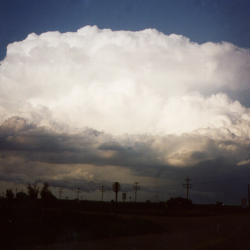AOSC Scientists Track Lightning “Pollution” in Real Time Using NASA Satellite
Led by UMD Atmospheric and Oceanic Science researchers, Kenneth Pickering and Dale Allen, this novel experiment reveals how thunderstorms affect our climate and how Earth’s atmosphere breaks down pollution.
Picture this: You’re stuck in traffic on a summer afternoon, checking the weather app on your phone as dark storm clouds roll in. You might think about power outages or possible flooding, but you probably don’t think about how every lightning bolt that flashes across the sky also emits a gas, nitrogen oxide (NO), that is also emitted in the exhaust from your car’s engine.
Yet, that’s exactly what occurs during a thunderstorm. For the first time, scientists from the University of Maryland were able to detect lightning and its impact on air quality using high-frequency satellite observations, gaining valuable insight into how storms produce both pollution and critical chemical species that help cleanse Earth’s atmosphere.
- Log in to post comments







